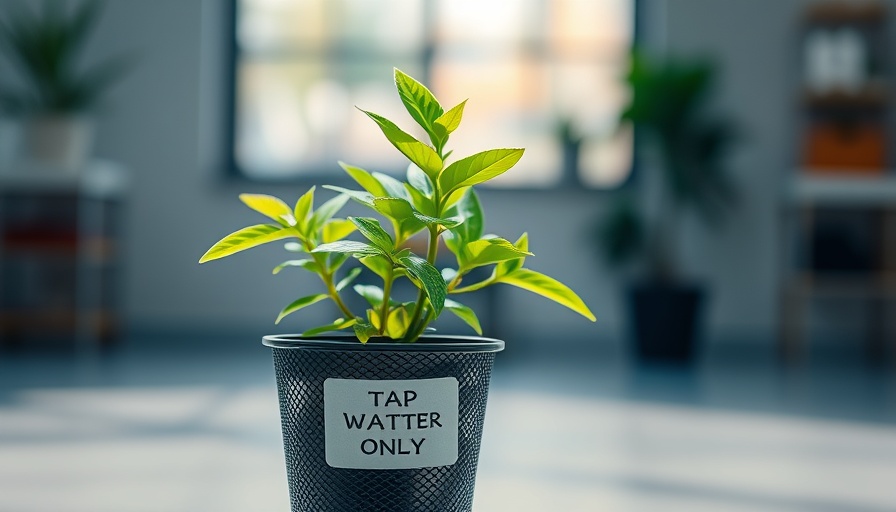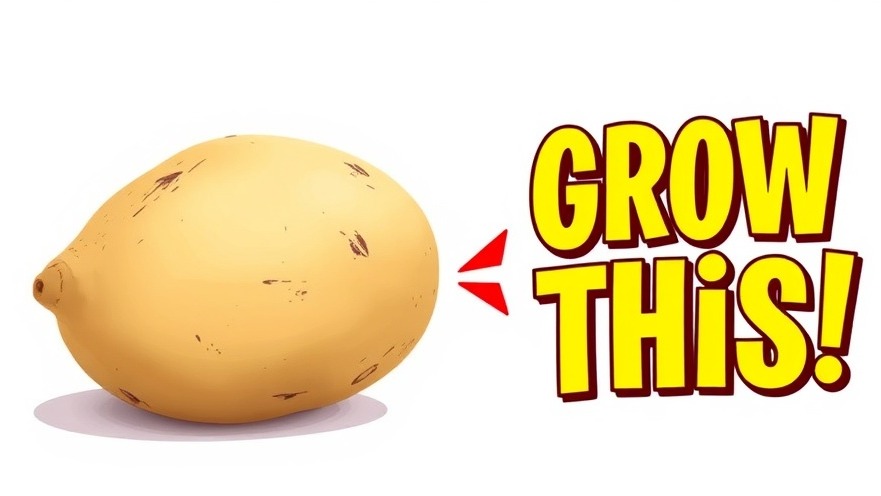
Miracle-Gro vs. Organic Fertilizers: Understanding What Your Plants Need
For gardeners seeking the best way to nurture their plants, the debate over using synthetic fertilizers like Miracle-Gro versus opting for organic alternatives can be daunting. Each approach has its merits, suited for different gardening styles and philosophies. Let's dig into the facts and provide a clearer view of what might work best for you.
In 'Miracle Gro Fertilizer Vs Organic', the discussion dives into the benefits and drawbacks of both fertilizer types, providing valuable insights for gardeners.
The Science Behind Miracle-Gro
Miracle-Gro is renowned for its ability to deliver rapid plant growth. Comprising synthetic nutrients, it quickly allows plants to absorb essential elements like nitrogen, phosphorus, and potassium directly. For Okanagan gardeners looking for quick results, this can be a compelling option—especially during the short growing season. However, the quick-release nature of synthetic fertilizers can also lead to nutrient leaching, potentially harming the environment by introducing excess nitrogen and phosphorus into local waterways.
The Benefits of Going Organic
On the other hand, organic fertilizers, including compost, manure, and fish emulsion, rely on slow-release nutrients that boost soil health over time. These fertilizers enrich the soil microbiome, which is crucial for sustainable gardening practices. Such methods may not provide the instant gratification that Miracle-Gro offers, but they promote ecological balance and may yield healthier plants in the long run.
Environmental Considerations
When choosing between Miracle-Gro and organic fertilizers, it’s essential to consider the ecological impact as well. With increasing concerns over sustainable living, Okanagan gardeners, like many others, are leaning towards organic options. Using organic fertilizers not only minimizes chemical runoff, but it also contributes to overall soil health—something vital in the context of climate change.
Personal Gardening Goals: Mirroring Your Choices
Understanding your gardening goals plays a crucial role in selecting the right type of fertilizer. Those aiming for lush flower beds for a one-time event might prefer a quick boost from Miracle-Gro, while gardeners dedicated to ongoing, sustainable gardening practices favor organic options. This crucial choice reflects the broader conversation happening in the gardening community about best practices and responsible stewardship of the land.
Practical Tips for Okanagan Gardeners
If you choose to explore the organic route, consider these practical tips: add compost to your soil in the fall, use mulching techniques to retain moisture, and choose plants adapted to the Okanagan climate to minimize resource demands. On the flip side, if you decide on Miracle-Gro, be cautious of over-fertilization. Follow the packaging instructions and monitor your plants’ health closely, adjusting as necessary. Too much fertilizer can lead to nutrient burn, which can compromise plant health.
What Feelings Do These Choices Evoke?
The decision on fertilizers can elicit various feelings. For some, the option to choose organic fills them with pride, knowing they are making environmentally conscious choices. For others, the convenience and immediate results of Miracle-Gro can provide comfort, particularly when results are visible and rewarding. Understanding these emotional responses can lead to a more satisfying gardening experience.
Future Trends in Gardening Fertilizers
Expert predictions indicate a shift towards more environmentally friendly gardening practices and products as climate awareness increases. Home gardening could see a rise in integrated pest management and innovative organic fertilizers crafted from waste products. Okanagan gardeners who engage with these trends may find their practices not only more sustainable but also more community-oriented as they share resources and knowledge.
In conclusion, the choice between Miracle-Gro and organic fertilizers depends largely on your gardening style, goals, and values. As Okanagan gardeners, embracing whichever method aligns with those ideals is crucial. Both options have their place in gardening, and understanding their impact illuminates the path to a healthier garden and a healthier planet. For further insights and a robust community discussion, consider reaching out to local gardening groups!
 Add Row
Add Row  Add
Add 




 Add Row
Add Row  Add
Add 

Write A Comment